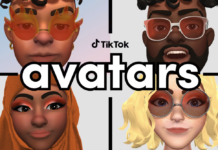The Co-Founder of Ethereum, and the creator of Polkadot, Gavin Wood has suggested that the blockchain can assist in repairing social media. As per Wood the blockchain has all the necessary attributes to change the narrative of Social media and user interaction.
It was revealed that Frank McCourt’s Project Liberty partnered with the Web3 Foundation Polkadot’s project to create a decentralized social media.
He said that the call for Web 3.0 must be a cautious step as it can trigger an era of uncensored posts on the World Wide Web. The leaving of tech giant companies to filter what comes in and out of the web space can be threatening.
As an alternative, Gavin Wood said that Web 3.0 needs a worldwide accessible database to be healthy.
For example, social media Facebook and Instagram have become giants by connecting people to their friends as well as letting them swap updates and then feeding in other content along with ads.
Based on information gathered from all of those interactions and relationships, the services shape that commercial material in highly personalized ways.
Frank McCourt, the billionaire who donated $100 million to create decentralized social media, along with Wood see this state of affairs as a threat to democracy. They say that if the firms can’t control the data then it will disrupt the whole system, and remove the rewards for collecting misinformation or hate speech to go viral.
Theoretically, it would also make sure that users do not have to keep coming back just to stay connected with their loved ones and give people a say over their data hoards.
McCourt also believes the best way to provide consumers that power is to put the social graphs of their connections on public, decentralized blockchains. This eliminates the need for a corporate-controlled data storage, allowing users to move their data and digital relationships from service to service.
Wood’s Polkadot focuses on connecting multiple blockchains, harnessing them in parallel and speeding their interactions. The partnership of Wood and Mccourt will extend Wood’s vision for Web3 beyond the world of finance to the social networking world.
Wood and McCourt’s project may face challenges as a decentralized environment will have to attract developers whose apps can beat the odds and become famous enough to challenge the current giants.
Even after that, users have strong social tendencies to leave or stay on the services where their friends are, and the market has strong tendencies to reward only a few specific powerful giants.
Even though McCourt wishes to innovate rather than regulate, a successful Web3 social media will maybe need policymakers in order to boost users’ ability to communicate across services. It will also need to defeat the notion of “decentralization”.





